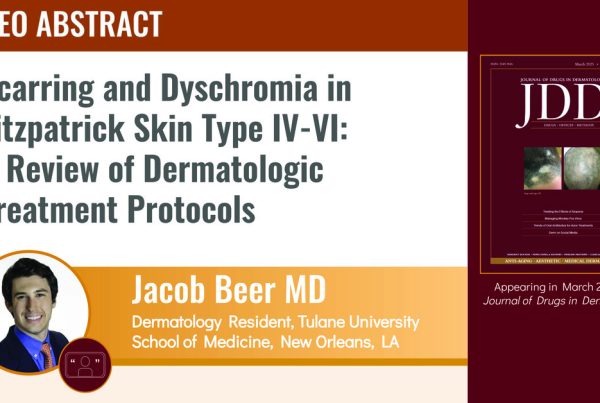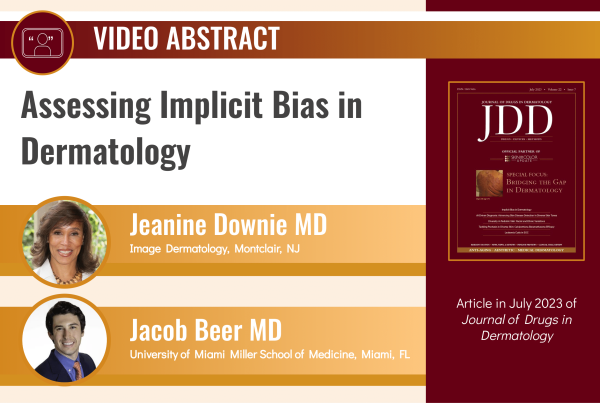 The Journal of Drugs in Dermatology (JDD) presents Open Access content, unrestricted access to our
The Journal of Drugs in Dermatology (JDD) presents Open Access content, unrestricted access to our The Journal of Drugs in Dermatology (JDD) presents Open Access content, unrestricted access to our
The Journal of Drugs in Dermatology (JDD) presents Open Access content, unrestricted access to our The Journal of Drugs in Dermatology (JDD) presents Open Access content, unrestricted access to our
The Journal of Drugs in Dermatology (JDD) presents Open Access content, unrestricted access to ourMolluscum contagiosum (MC) is one of the 50 most prevalent diseases worldwide. This common cutaneous infection mainly affects children, with the greatest incidence occurring in individuals aged 1–14 years. The MC virus is most commonly transmitted through skin-to-skin contact with infected skin, contaminated objects (eg, bath towels, toys, and clothing), autoinoculation, and sexual transmission. MC lesions can cause pain, pruritus, may become infected, and have been shown to negatively impact quality of life (QoL). One study found that in untreated immunocompetent children, MC infections lasted an average of 13 months, and persisted in 30% of children after 18 months, and in 13% of children after 24 months. MC is likely to have a substantial effect on the QoL on 10% of children with the infection, and a moderate effect has been documented in 17.3% of patients.
Visible light (400–700nm), which contributes to 45% of solar radiation, contributes to skin darkening and worsening of dyschromias, particularly in individuals with Fitzpatrick skin phototypes III and higher. Currently, sunscreens provide limited protection against that spectrum. Due to their capabilities in absorbing, scattering, and reflecting visible light, topical products containing pigments and/or metal oxides can provide additional photoprotection. In this study, the efficacy of two formulations containing iron oxide was evaluated in preventing visible light-induced pigmentation compared with a non-tinted mineral SPF 50+ sunscreen. Expert grading and colorimetry demonstrated that the iron-oxide containing formulations significantly protected against visible light-induced pigmentation compared to untreated skin or mineral SPF 50+ sunscreen in Fitzpatrick IV individuals. These results highlight that iron-oxide containing formulas in a foundation format have dual functions and can provide additional benefits in patients’ daily routine by masking existing pigmentation and preventing the development of pigmentation triggered by sunlight exposure, extending protection beyond UV spectrum.
Effectiveness and safety of Restylane® Lidocaine (HAR; Galderma, Uppsala, Sweden) and Restylane Lyft Lidocaine (HARL), manufactured using the NASHA™ technology, have been evaluated in clinical studies mostly performed in North America and Europe.1-7 Market research has indicated different treatment needs from clinical practice in Asia (data on file), making it important to collect data on aesthetic treatments in Asian populations. Also, it is of interest to collect additional data on repeated full-face treatments and long-term follow-up. With these factors in mind, the objective of this study was to provide documentation of long-term safety and effectiveness of HAR and HARL when used for repeated full-face treatment in Asian patients. The study products are approved for use in Taiwan, where the study was conducted.
At birth, the neonates’ skin is structurally and functionally immature compared to adult skin.1 Neonates and infants exhibit distinct anatomical and functional skin properties making it susceptible to skin barrier disruption.1-3 Infant skin functionally is still developing as indicated by elevated trans-epidermal water loss (TEWL), skin surface pH and desquamation.2-5 Several mechanisms may play a role in the slightly alkaline skin pH at birth; the most relevant could be the exposure to the alkaline amniotic fluid during the preborn life.
Cellulite is a localized alteration of skin topography (eg, dimpling) and affects 80% to 98% of postpubertal women of all ages and ethnicities.1,2 Although the pathophysiology of cellulite has not been fully elucidated, data suggest the number, type, and orientation of the collagen-rich (fibrous) septae play a primary structural role.1,3 Other factors may include subcutaneous (SC) edema and fibrogenesis; SC adipose protrusion; and decreased dermal thickness with age.1-3 Several procedures and technologies that target the dermis and adipose tissue, in addition to fibrous septae, have shown improvements in skin texture and the dermal-SC interface; however, these improvements could be secondary to the effects of releasing the fibrous septae.4-7
Contact the JDD to learn more about Subscriptions, Renewals, and Institutional/Corporate Subscriptions.

